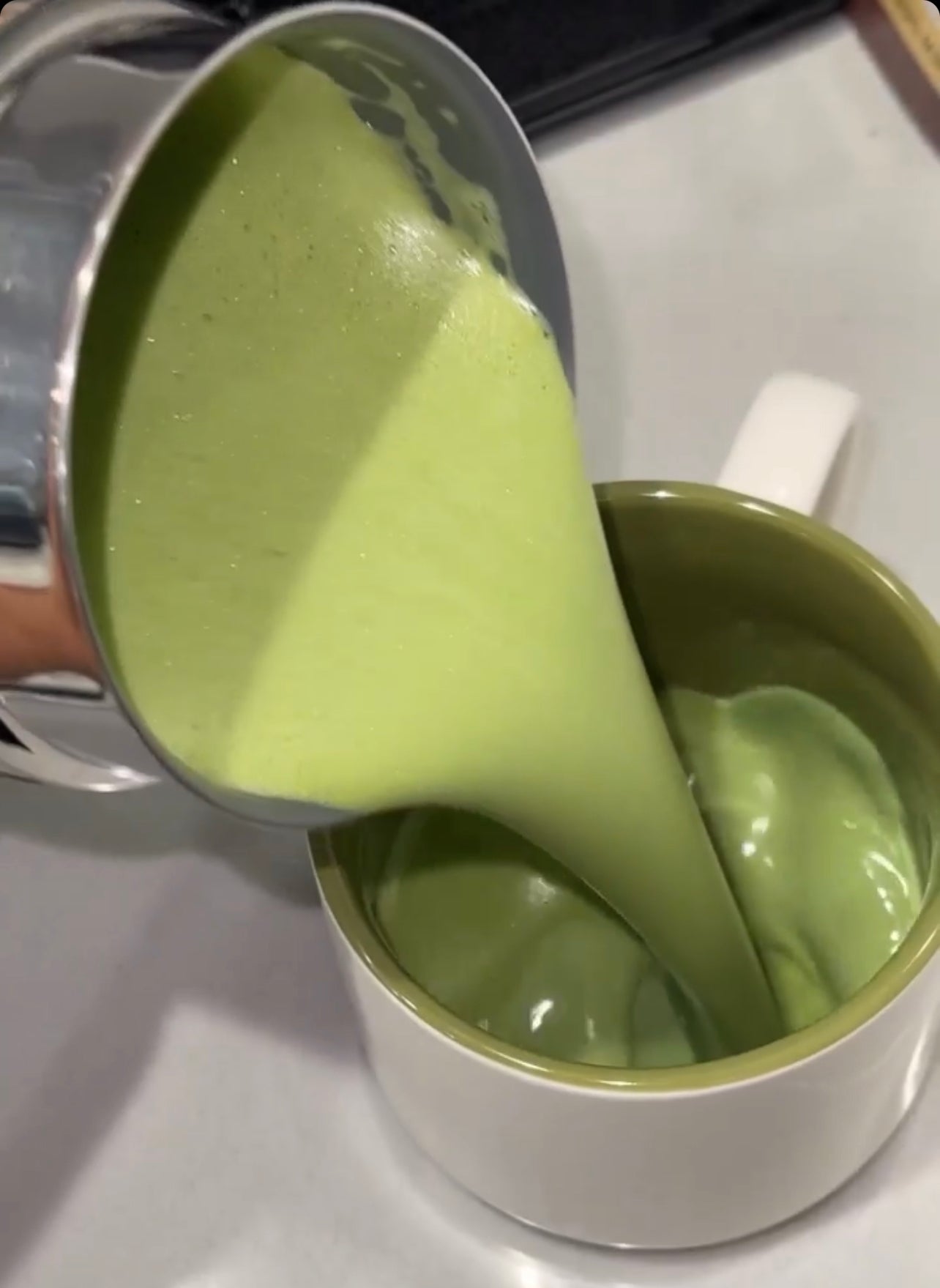No Products in the Cart

Ceremonial grade matcha is meant to be enjoyed on its own in the form of tea. This superior matcha tea grade is used in traditional Japanese tea ceremonies where it is whisked with hot water and savored plainly for its smooth mouthfeel with light sweetness and a lasting finish that can range anywhere from sweet nuttiness, floral, umami, or pleasant bittersweet notes.
A high-quality ceremonial grade matcha powder is also vibrant green as compared to culinary grade matcha as it is produced from first harvest tea leaves which contain the highest content of chlorophyll and L-theanine.
Culinary grade matcha has a more pronounced bitter/grassy taste and a less fragrant aroma. It may sound unappealing, but it still works in baked goods and other confectionery because matcha is usually just one of many ingredients. Culinary grade matcha is also produced from later harvests, which is the reason why its color is not as vibrant as ceremonial grade matcha.
Nevertheless, this does not mean that culinary grade is of a “low-quality” grade matcha. Both matcha grades are designed for different uses and choosing a good quality ceremonial or good quality culinary matcha will make the most of your matcha experience. Our Baraguz Ceremonial and Culinary matcha are both premium grade which means it was created with the best quality in both cases.

The shading process is the most important step in matcha cultivation. In the few weeks leading up to harvest, the tea plants are deprived of sunlight and grown under shade. This changes the amino acid profile of the tea leaves and gives matcha its signature mellow, umami taste. The different shading techniques and duration of shaded growth are important variables for the grower to decide.
The first harvest (otherwise known as the first flush or Shin Cha) is typically the best because the tea plants have retained the nutrients accumulated over winter, this one would be Ceremonial Matcha powder. Matcha of the highest quality would be made using only first harvest tea leaves, while others may comprise a blend of first or second harvest leaves to keep costs low.

After harvest, the tea leaves are sent to a factory to be steamed, dried, sorted, and cut. Veins, stems, and impurities are removed. The processed leaves should be stored in a refrigerated room if not immediately ground into matcha. Storing tencha (or matcha) at cooler temperatures is important to preserve freshness. Ground matcha should have the same texture as talcum powder and should not feel grainy, if it's grainy it is of lower quality. If any of these criteria are not met, we would have serious doubts about the quality of the matcha.
A vibrant green is important and is indicative of freshness. Yellowish matcha powder suggests that the matcha has become stale or that it was made using the leaves harvested from the bottom of the tea plant rather than the top of the plant which is the newest leaf. However, be aware of possible variations between the shades of green. Regardless of grade, the green color of matcha should look “fresh” and not faded.

Summary:

Bottom line:
Our Baraguz SlimT Ceremonial and Culinary Matcha are made with the most premium ingredients so that no matter which grade you choose you will always have an amazingly great quality tea experience.
Please share with us what you have made with our delicious Matcha.